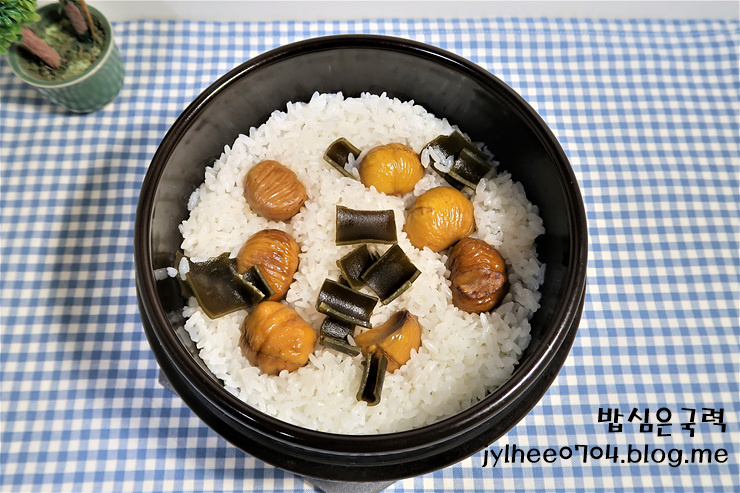Kelp and Chestnut Rice (Dasima Bam Bap): A Symphony of Textures and Flavors
Kelp and Chestnut Rice

Hello everyone! A hearty meal starts with perfectly cooked rice, and today, we’re elevating it with a delightful ‘Dasima Bam Bap’ (Kelp and Chestnut Rice). Chestnuts are a nutritional powerhouse, packed with vitamins A and C, known for their anti-aging and immune-boosting properties. We’re using fresh chestnuts, specifically large ones that are ready to eat raw (‘saengyul’), often called ‘yakdan’ chestnuts which are cultivated in China and popular for roasting. This recipe brings together the chewy texture of kelp and the sweet, earthy notes of fresh chestnuts for a truly unique and satisfying rice dish. Let’s get cooking!
Ingredients- 7 fresh chestnuts, pre-scored for easy peeling
- A small piece of dried kelp (about 5cm x 5cm)
- 1 cup of short-grain rice (approx. 180ml)
- A little less than 1 cup of water (approx. 170ml, reduce water slightly as chestnuts release moisture)
Cooking Instructions
Step 1
Let’s start by preparing the star of our dish: the fresh chestnuts. These chestnuts come with pre-scored lines on their shells, making peeling them incredibly easy. You can skip the frustration of peeling and move straight to the cooking!

Step 2
Rinse the dried kelp briefly under cold water to soften it. Then, cut it into small, bite-sized cubes, about 1cm in size. This will ensure the kelp is easy to eat with the rice and its umami flavor infuses beautifully throughout.

Step 3
Now, let’s prepare the rice for cooking. For one serving, we’ll use 1 cup of short-grain rice (about 180ml). When washing the rice, discard the very first rinse water quickly to remove any residual husk smell, then gently rinse the rice two to three more times. Soaking the rice for about 20 minutes will help it cook up fluffy and delicious.

Step 4
In a ttukbaegi (Korean earthenware pot), first add the rinsed and soaked rice. Then, place the prepared fresh chestnuts and the cubed kelp on top. Pour in the water. Because the chestnuts will release their own moisture as they cook, it’s important to use slightly less water than you normally would. This prevents the rice from becoming too mushy and ensures a perfect consistency.

Step 5
We’re ready to cook! Place the ttukbaegi over medium heat. Let the water come to a rolling boil. Once it starts boiling, reduce the heat to low, cover the pot tightly with a lid, and let it cook. The entire cooking process, including steaming, will take about 20 minutes until the rice is perfectly done.

Step 6
After 20 minutes, turn off the heat completely. Keep the lid on and let the rice steam for an additional 5-10 minutes. This steaming (or ‘뜸’, ‘tteum’ in Korean) step is crucial for allowing the rice grains to fully absorb any remaining moisture, becoming tender and fluffy. It truly enhances the final flavor and texture. Enjoy your delicious Dasima Bam Bap!




